#Attorney Gary Dubin
Text
Hawaiian Foreclosure Defense Attorney Gary Dubin Disbarred
Hawaiian Foreclosure Defense Attorney Gary Dubin Disbarred
Hawaiian Foreclosure Defense Attorney Gary Dubin Disbarred About Previous Legal Issues And For Defrauding Clients

The Hawaiian Supreme Court has disbarred Hawaiian foreclosure defense attorney Gary Dubin. The court entered a final order imposing the sanction of disbarment effective Friday, October 9, 2020. However, the court did give Dubin an extension to November 9, 2020, to wrap up his…
View On WordPress
#Attorney Gary Dubin#Attorney Gary Vincent Dubin#foreclosure defense hawaii#hawaii foreclosures#Hawaiian Foreclosure Defense#hawaiian foreclosures
0 notes
Text
The Aristocats at 34
A review by Adam D. Jaspering
The second Disney Dark Age was defined by a series of decisions resulting in decreased film quality. Some decisions were timesavers, prioritizing efficiency above craft. Some were financial decisions, scaling back ambition, favoring simplicity. Some of it was a general sense of disillusionment. The glory days of the Disney empire were gone. Animation as a medium was in a rut. The prestige of working in cartoons was akin to working on an assembly line.
The Aristocats was never a children’s book, fairy tale, or published story. It was an original concept by writers Tom Rowe and Tom McGowan for Disney’s Wonderful World of Color. In 1961, they were instructed to develop stories featuring animal protagonists.

One of the stories involved a family of cats forced from their home by an evil butler and maid. The cats would hide around Paris, staying safe, exploring the locales, having adventures. This was the first draft of The Aristocats.
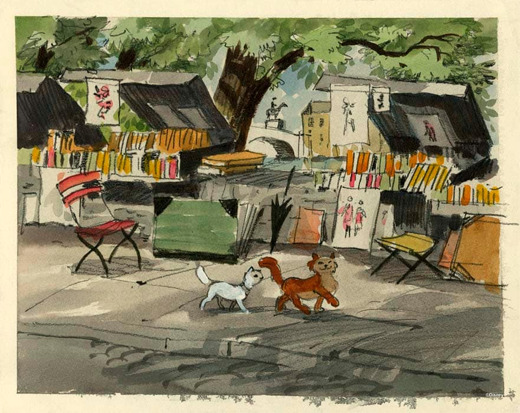
For years, the writers worked and re-worked the story as a two-part, live-action, made-for-TV movie. From every angle, The Aristocats was infeasible. The writers were trapped in an endless cycle of revision, rejection, revision, rejection. By 1966, they gave up. With so much time, money, and effort sunk, they recouped their losses by selling the treatise to Disney Animation Studios.
The animated medium worked to the writers’ advantage. The cats could now talk, react, move, emote, and think like more than simple house pets. It made completing the script much simpler. However, that was the only advantage earned.
The greatest indicator of the troubled writing process is how heavily the movie borrows ideas from previous Disney films. Disney had made films about pets in trouble before, and they were successes. To copy their success, The Aristocats copied a number of plot elements and themes.
Consider what is lifted from 101 Dalmatians. Someone nefarious kidnaps a bunch of beloved pets. The pets evade their captor, and are forced on an arduous trek back home. They find respite only through the hospitality of other animals along the way.

Consider what is lifted from Lady and the Tramp. A spoiled pet, accustomed to love and indoor life, is forced from home. They find a streetwise transient with a heart of gold who agrees to help. Over time, love blooms despite the pair coming from two different worlds.
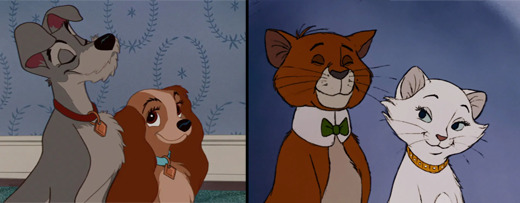
The Aristocats is a shameless blend of 101 Dalmatians and Lady and the Tramp, simply substituting the dogs with cats. It offers nothing unique. What it lifts, it doesn’t improve on.
The xerographic animation is the worst its ever been. Xerography has always resulted in scratches, inconsistent line widths, and rough details. In The Aristocats, it’s laughably bad. Lines are sketchy, frayed, and wiry. In wide shots, character outlines are too thick. On close-ups, outlines are too thin. Errant reference lines are left in place, never cleaned before going to print. Detail lines are too bold and garish. The animators were either getting sloppy or lazy.
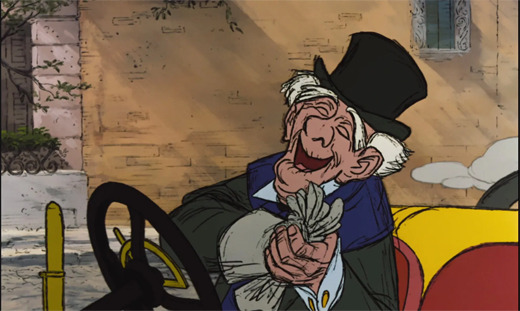
The female lead of the movie is Duchess, a white angora cat. She is voiced by Hollywood actress Eva Gabor. Gabor is best known for the sitcom Green Acres, where she played a socialite unwillingly relocated to a country setting. She admirably plays Duchess, a cat socialite unwillingly relocated to a country setting.
Gabor lends an air of nobility and sophistication to the character. Unfortunately, she never fully hides her Hungarian accent. She slips between her natural voice and a French affectation, creating a definite European sound, but not of any particular area.
Duchess’s three kittens are Marie (white, voiced by Liz English), Berlioz (black, voiced by Dean Clark), and Toulouse (orange, voiced by Gary Dubin). All three are voiced by American children and speak in an American accent.

In most Disney movies, young characters are voiced by actual children. The same is true for The Aristocats. Unfortunately, the three actors here are among the worst the studio has ever seen. The children lack a sense of timing and awareness in their recitations. Everything they say is forced and toneless. They’re not acting, just reciting the script. It’s made all the worse they don’t project, delivering their lines quietly and without passion into the microphone. Every line sounds as though they have sore throats and stuffy noses.
The male lead is O’Malley, an orange piebald shorthair voiced by Phil Harris. Phil Harris voiced Baloo in The Jungle Book, and was acclaimed for bringing the bon vivant bear to life. It’s no surprise, in a film that has already recycled so much, it recycles an entire character. Phil Harris gives O’Malley Baloo’s relaxed nature, cocky arrogance, love of music, and budding paternal instincts. The only difference between O'Malley and Baloo are their species.
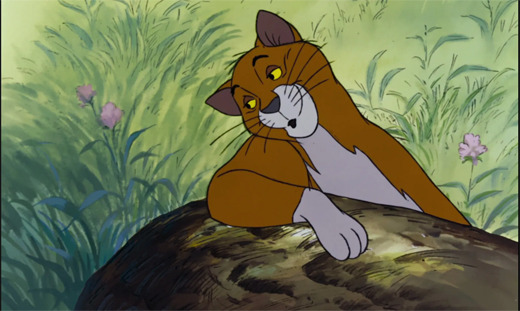
The plot of the film centers around Madame Bonfamille, an elder Frenchwoman of notable wealth. An aging woman, she meets with a lawyer to draft a will. With no spouse and no living family, she bequeaths her estate and all monetary goods to her beloved cats.
This enrages her longtime, long-suffering butler, Edgar. So much so, he conspires to kill the cats, leaving him the sole beneficiary. The evil maid from the original story spec was written out completely.

There is so much to unpack in such a confounding setup. The first among them, Madame Bonfamille won’t relinquish her estate until she dies. She appears to be in her 70s, but is still fully ambulatory, healthy, and mentally sound. She won’t be passing on anytime soon.
So why would Edgar attempt to kill the cats immediately? If he killed the cats now, Madame Bonfamille would adopt new cats and start the cycle anew. Why wouldn’t he kill the cats when Madame Bonfamille is closer to death? If she’s enfeebled or incapacitated, she’d be unable to amend her will.
Let’s give Edgar the benefit of the doubt and assume he panicked. He was blinded by greed. He was offended his boss would discount his years of loyal service. He’s seen as lesser than a quartet of creatures who use a litter box. He didn’t consider the ramifications of preemptive catslaughter. The insult caught him off-guard.

If Edgar behaved rationally, bided his time, and planned a perfect murder, killing the cats would still be stupid. Without researching French estate law of the early 20th century, we can reasonably assume a person cannot name pets as beneficiaries. In which case, the will’s stipulations would be voided and Edgar would inherit the estate.
Assuming it’s unconventional but acceptable, the cats would need a caretaker. What would cats do with such money? Cats can’t shop, can’t pay bills, can’t pay taxes. Edgar would almost certainly be given power of attorney over the cats. He’d live in the manor, be granted a trust fund, and all in exchange for occasionally feeding a few cats. The cats would legally own the wealth, but Edgar would be in charge of where it’s spent. Edgar would get everything anyways, and his hands would be clean.

Even for a kid’s movie, the plot is overly simple and collapses under scrutiny. After so many rewrites and changing of hands, standards dropped noticeably. Nine different writers worked on this movie. The filmmakers had no expectations of the script beyond “complete” and “printed on paper.” The Aristocats is no masterstroke. But maybe it was never intended to be.
It’s never been officially stated, but in an era of financial instability, it’s easy to see the appeal of The Aristocats. A paper-thin plot is an acceptable concession to showcase a bunch of dancing and singing cats.
Disney had never made a cat movie. Disney had made dog movies, and subsequently sold dog toys and dog merchandise. But some people like cats more than dogs. There was an untapped market for cat toys and cat merchandise. All they needed was a cat movie. The plot was irrelevant.
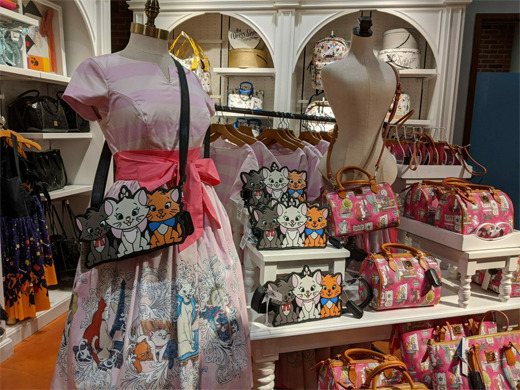
The stakes of the movie are incredibly low. In 101 Dalmatians, the dogs are forced to walk from the outskirts of town back into London. It’s an arduous journey. The weather is harsh and unforgivable. The puppies are tired and hungry. The villain is actively on their trail, ready to attack at any minute.
In The Aristocats, the cats are forced to walk from the outskirts of town back into Paris. It’s a leisurely walk through the countryside. The weather is pleasant and sunny. Edgar doesn’t pursue the cats, assuming them already dead.
The cats were carted off somehow, and now must return home. Their journey isn’t one of survival, just inconvenience. It’s all the tension of a motorist running out of fuel and walking to the nearest gas station.

The plot is so razor thin, characters and vignettes are introduced that do nothing except pad the runtime. After O'Malley falls in a river, he’s saved by a pair geese. It’s an Avis Ex Machina.
Their contribution to the story fulfilled, the geese do not waddle off. The cats follow them into town. There, we meet the geese’s drunken uncle. The drunken uncle does nothing of significance or importance. He stumbles, confused, dizzy, inebriated in a misguided attempt at humor. It’s funny because he abuses intoxicants. Enjoy, kids!
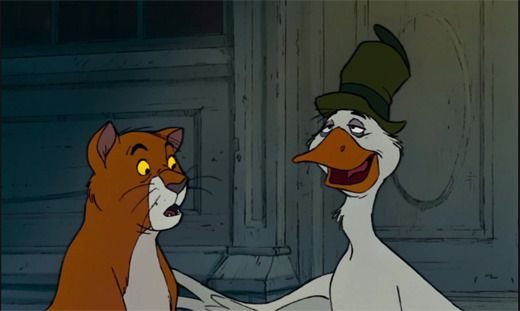
When Edgar attempts to dispose of the cats, his efforts are interrupted by two hound dogs. These dogs chase his motorcycle, causing Edgar to crash. In order to escape without being mauled, Edgar leaves the sidecar and several personal effects behind. He’s forced to return the next day to retrieve the incriminating evidence.
Why these two dogs are so territorial is inexplicable. They don’t just chase Edgar’s motorcycle, they declare a vendetta against him. They chase him off, they chase him back, they even steal the motorcycle and attempt to run him down. If Edgar wasn’t literally trying to drown kittens, the dogs would easily be the villains of the movie.
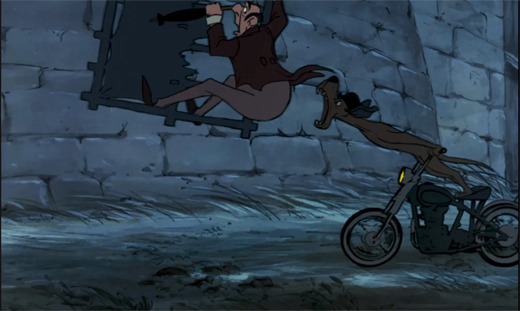
The dogs have Georgia accents. There’s no reason why. They live in France, just the same as any other character. Should we assume the dogs immigrated from the American south just to work on a farm in a new country? Were they adopted by French farmers from breeders across the Atlantic?
Simply put, they’re hound dogs. Hound dogs are stereotypically southern. It would be silly to have them speak French. It’s also silly to have two characters with Georgian accents in the French countryside. There were no good solutions here.

There’s also a Chinese cat who supplants his L’s with R’s when he speaks. He has buck teeth and squinty eyes. He carries chopsticks around with him. The Aristocats copied so much from Lady and the Tramp, why wouldn’t it also copy its racist stereotypes?

Madame Bonfamille and Duchess are the only characters in the film to have French accents. The rest of the characters speak with American, British, and Appalachian accents. For a film set in France, an array of English dialects is distracting and confusing.
Maurice Chevalier sings the film’s title song. Disney secured a French icon, but shied away from the French language. French accents were either too distracting or too indecipherable. At the least, the replacement accents should be consistent.
The French setting was entwined with The Aristocats since its Disney’s Wonderful World of Color days. Producer Harry Tytle is credited with setting the film in Paris. The intention was, what 101 Dalmatians did for London, The Aristocats would do for Paris. Yet another idea borrowed from 101 Dalmatians.
While The Aristocats is set in France, there’s nothing specifically French about its setting. Except for the establishing shots, the movie could just as easily be set in Montreal or Stockholm. Most of the movie is set in a faceless countryside or indistinct buildings.
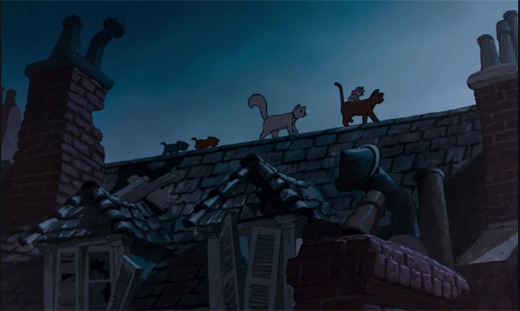
The other puzzling aspect of the setting is when exactly this movie takes place. The movie insists the year is 1910; the vehicles, furniture, clothing, mannerisms, etc support the assertation. But Scat Cat and his crew are cats out of time.
Scat Cat is a jazz musician (voiced by Scatman Crothers, hence the name). Scat Cat and his band are close friends of O'Malley, later becoming friends with Duchess and her kittens. The band play anachronistic, 60s-era swing jazz.
While jazz music did exist in the 1910s, it was closer to its Dixieland and ragtime forbearers. It certainly wasn’t present in France. Jazz didn’t reach French ears until WWI, introduced by American soldiers. All that’s beside the point; Scat Cat and his crew come straight out of the Kennedy era.
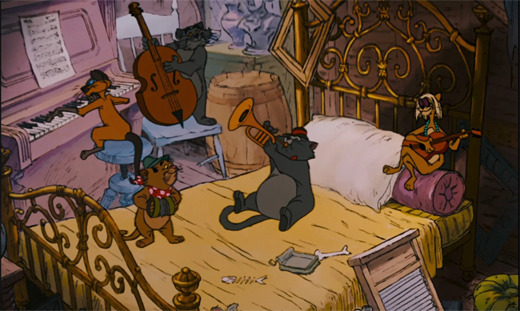
Anachronistic music has never been a problem in Disney films, but early 60s music in a 70s movie set in the 1910s is a disastrous choice. 70s music would be acceptable. 1910s music would be acceptable. Even 40s music, splitting the difference, would be an acceptable choice.
Music can’t be used in a movie just because somebody on staff likes the song. It needs to fit the film, of course, but it also needs to be either modern and contemporary, or a nostalgic throwback. It’s the exact reason the Sherman Brothers shirked from using a rock and roll song in The Jungle Book.
60s jazz is dated, irrelevant, and distracting. It doesn’t belong in the movie. It doesn’t fit the setting. It’s not old enough to be classic, and not new enough to be relevant. It makes Disney seem like their finger is off the pulse. But there were big jazzy numbers in The Jungle Book, and The Jungle Book was a success. So The Aristocats also got a big jazzy number, even if it makes zero sense.

The Aristocats is a mess from the bottom up. The paper thin plot is a discarded treatise no one else wanted to make. It’s puffed up with unnecessary scenes and characters that contribute nothing. What little is offered is blatantly recycled from other Disney pictures. The animation is among the worst ever proffered from Disney Animation Studios. The characters are bland and undefined, the setting is underutilized, and the ending is so conveniently contrived, you can tell precisely when the screenwriters threw their hands up in frustration.
It may be unfair to place the failure of The Aristocats on Disney Studios alone. The 1970s was a dark age for animation in general. The decline of the studio system in the 1960s had a ripple effect into the animation industry. Theatrical shorts from MGM, Warner Bros, Universal, Paramount, and Disney themselves ceased in the mid-60s. Animation was becoming outdated and irrelevant.
The end of the era would be tragic, but animation wasn’t a dead medium. Ironically, the rise of Saturday morning cartoons on television meant animation had a larger audience than ever. But without studio financing and prestige, cartoons were churned out cheaper, quicker, and with smaller returns. There was a market demand without standards or incentive. It was a no-win situation.
Still suffering from Walt’s death years ago, Disney Animation Studios was under financial strains and a creative dry spell. Disney animation was coasting on nostalgia, constantly in danger of being shut down. The board of directors only needed one excuse.
The filmmakers cut every corner and made every concession. In doing so, The Aristocats came in underbudget, and turned a profit. In financial terms, the movie was a success. And while the film has its share of fans and defenders, from a cinematic standpoint, in every other sense, it is a disaster. Disney Studios proved cats don’t always land on their feet.
Fantasia
Snow White and the Seven Dwarfs
Cinderella
Alice in Wonderland
Sleeping Beauty
Pinocchio
The Jungle Book
The Sword in the Stone
Bambi
101 Dalmatians
The Three Caballeros
Lady and the Tramp
Peter Pan
Dumbo
Melody Time
Saludos Amigos
The Adventures of Ichabod and Mr. Toad
The Aristocats
Fun and Fancy Free
Make Mine Music
#The Aristocats#Disney#walt disney#Walt Disney Animation Studios#disney studios#movie review#Film Criticism#film analysis#Disney canon
11 notes
·
View notes